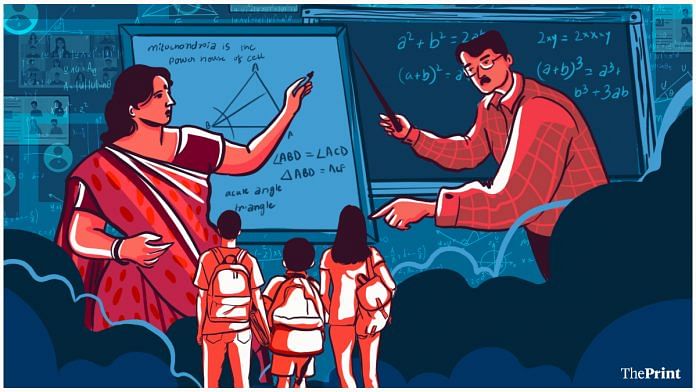Thank you dear subscribers, we are overwhelmed with your response.
Your Turn is a unique section from ThePrint featuring points of view from its subscribers. If you are a subscriber, have a point of view, please send it to us. If not, do subscribe here: https://theprint.in/subscribe/
India’s education system presents a paradox. On the surface, government schools offer free education, promoting accessibility. However, this very aspect fosters a segregated system where well-funded private schools flourish, leaving government institutions under-resourced and struggling. This, in turn, fuels the rampant growth of the tuition industry.
The free government school system suffers from a critical flaw: mediocrity. Teacher appointments often prioritize factors beyond qualifications, resulting in a workforce ill-equipped to compete with the dynamic, albeit unregulated, world of “Whatsapp University.” This lackluster teaching quality compels parents, particularly those with modest incomes, to seek alternatives for their children’s education.
Aided private schools, run by trusts with government assistance, face their own set of challenges. Often, their primary focus becomes securing donations rather than nurturing young minds. Additionally, restrictions on generating revenue leave them dependent on uncertain government aid, hindering investment in technology and infrastructure.
Further complicating the situation is the growing demand to cap fees across all educational institutions, including completely private ones. This seemingly populist measure fails to consider the economic realities of these schools. When a private school, devoid of government aid, is restricted from setting its own fees, the inevitable consequence is a compromise on quality and technological advancements.
The result is a vicious cycle:
- Free education: While promising in theory, it translates to minimal cash flow for government schools.
- Reliance on aid: Uncertain government funding creates financial instability.
- Resource constraints: Limited funds restrict infrastructural development and technology adoption.
- Teacher quality: Focus on budgetary constraints often overshadows merit-based recruitment.
- Teacher unions: Job security becomes the priority, potentially hindering quality improvement.
- Pay commissions: Increased teacher salaries further strain limited resources.
- Uncertain aid: Schools grapple with financial insecurity, impacting educational quality.
- Student suffering: The brunt of the system’s inefficiencies falls on the students.
- No exams till 8th grade: The lack of evaluation allows mediocrity to prevail.
- Tuition dependence: Parents resort to expensive coaching classes to bridge the educational gaps.
This cycle exemplifies a broken system. We see engineering students paying a staggering ₹5 lakhs for private tuition while their college fees amount to ₹2.5 lakhs. This highlights a critical issue: a fundamental flaw in our educational approach. Are we churning out graduates from factories, lacking the critical thinking and practical skills necessary to thrive in the real world?
It’s time we confront some uncomfortable questions:
- Are we prioritizing quantity over quality?
- Is the free education model truly serving its purpose?
- Are we adequately preparing our youth for the demands of the 21st century?
Marks, while crucial for college admissions, are a poor indicator of future success. Parents need to understand that education is a lifelong journey, not a race to the finish line.
The Path Forward
Rebooting our education system requires a multi-pronged approach:
- Revamp teacher training: Invest in rigorous training programs that equip teachers with the skills and knowledge to navigate the complexities of the contemporary learning environment.
- Performance-based incentives: Move away from a solely seniority-based promotion system. Reward teachers who demonstrate exceptional teaching skills and the ability to inspire students.
- Technology integration: Embrace technology as a powerful tool for enhancing learning. Utilize online resources, interactive learning platforms, and digital tools to create engaging and effective learning experiences.
- Rethink free education: Explore alternative funding models that incentivize quality and innovation in government schools. Public-private partnerships could be a potential solution.
- Parental involvement: Schools and parents need to establish a strong collaborative relationship. Parents must actively engage in their children’s education, going beyond rote memorization and focusing on fostering a love for learning.
Conclusion
The current state of Indian education is a cause for concern. Tuition classes, a symptom of a larger systemic issue, cannot be the sole solution. We need a holistic reform that prioritizes quality teaching, empowers educators, embraces technology, and fosters a culture of lifelong learning. Only then can we break the cycle of mediocrity and create a system that equips our youth with the skills and knowledge to become well-rounded, successful individuals. Let’s move beyond producing graduates from factories and instead, cultivate a generation of critical thinkers and innovators who can shape a brighter future for India.
These pieces are being published as they have been received – they have not been edited/fact-checked by ThePrint


